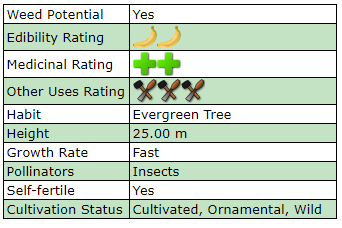[Wood Profile] What You Need To Know: Acacia Mangium
Acacia Mangium is one of the most common timber woods we use in making our wooden pallets. It also happens to be one of our choice timbers for exports.
Here are some things you do should know about the Acacia Mangium wood.
Wood Overview
Acacia Mangium is a common tree species that you can usually find in humid tropical lowlands in Asia. You can most commonly able to find such trees in countries such as Malaysia and Indonesia. It’s quite common to see Acacia Mangium trees in such environment because of the environment’s extremely vigorous growth rate, tolerance of highly acidic, low nutrient soils.
It also has the ability to grow reasonably well in environments where competition is severe. Acacia Mangium trees are relatively free from diseases. They also have wood properties that make it suitable for a wide range of uses. Furthermore, it is the kind of tree that is easy in cultivation.
You can commonly find this kind of tree’s woods be used in fuelwood, timber for building and furniture, and particle boards. There are also about 250 different sub-species of Acacia Mangium. Although you can commonly find them in Malaysia and Indonesia, the majority of such trees are confined to Australia.
Fruit and Flower Production
Acacia Mangium is a fruit- and flower-bearing tree. Its flowers tend to be white or cream in colour. They are usually pentamerous – parts arranged in groups of 5. At the same time, their flowers are loosely aggregated into spikes, which are 5cm to 12cm long.
The tree bears pods as fruits. Its pods are openly coiled and twisted. They may sometimes be tightly and spirally coiled 3mm to 5.5mm wide. They are also leathery to sub-woody and hairless to the touch. Its seeds are 3.5 to 5mm x 2mm to 3mm. They have a small, bright, yellow (sometimes orange) aril growth at its base.
Acacia Mangium – General Uses
This tree and its timber are used across many industries. It is even commercially grown for obvious reasons. Here are some of the most common usage of Acacia Mangium.
Paper Pulp, Kraft Pulp, and Chemical Pulp
Acacia Mangium is a highly versatile wood type. It is used on an industrial and local operator scale. The majority of large-scale plantations are used for the production of paper pulp, kraft pulp, and chemical pulp. Therefore, it is common to find Acacia Mangium in paper bags, wrapping paper, linerboards.
Back in 2010, Indonesia alone has produced approximately over 4mil tonnes of the tree’s pulp for the international market.
Solid Wood Products
Acacia Mangium is a solid wood tree. That means it is sturdy enough to use it to make furniture. In some countries like Australia, construction workers use it to build houses.
Other Uses
You can also use the tree’s woods for wooden pallets among other things. At the same time, you can use its wood as firewood. Keep in mind that it only applies to mature woods and not the ones from younger trees.
Acacia Mangium – Properties

Acacia Mangium has some properties that most people do not know about.
Edible Uses
The tree’s germinating seeds can be cooked and eaten as vegetables.
Medicinal
The versatile tree’s woods contain greater or lesser quantities of tannins and is considered astringent. They are often medicinal and can be taken internally. Oftentimes, they are used to treat diarrhoea and dysentery. In some cases, they are used to treat internal bleeding.
Externally, it can be used to treat wounds, skin problems, haemorrhoids, perspiring feet, some eye problems, act as a mouth wash, etc.
Conclusion
This tree and its wood is a useful and adaptable tree. Its wood is proven useful in many aspects not just in construction settings. If you ever need its wood, do not hesitate to contact us.
Articles That May Interest You
Fumigation: Keeping Pests Away
Why It’s Important to Have PPE at Your Office
Looking for PPE Suppliers? Misarma Has What You Need!

